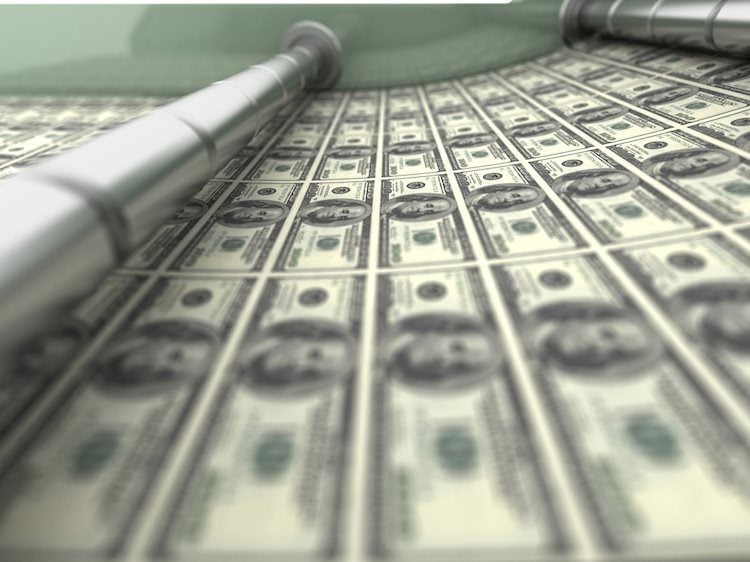- The DXY index first declined to 104.00 and then jumped back to 104.40.
- Jobless Claims accelerated in the first week of November, while Industrial Production from October disappointed.
- The mix of the labor market cooling down and inflation retreating is making investors believe Fed rate hiking cycle is over.
- The US will release Housing data on Friday including Building Permits and Housing Starts from October.
The US Dollar (USD) traded flat on Thursday and rotated within the 104.00 to 104.40 range. The USD remains pressured as markets place additional bets on the Federal Reserve (Fed) being less aggressive than expected after weak Jobless Claims and Industrial Production figures from the US.
The United States economy is showing signs of cooling down with a weakening labor market and inflation retreating, which makes it highly unlikely that the Federal Reserve (Fed) will raise interest rates at the upcoming December meeting. That being said, the bank will receive additional CPI and Nonfarm Payrolls reports before its last decisions of 2023, which could impact whether they ultimately decide to hike or not.
Daily Digest Market Movers: US Dollar struggles to gather momentum after weak data
- The US Dollar Index recovered to 104.30 from a low of around 103.98 and stands at its lowest point since September.
- During the week ending November 11, the number of US Initial Jobless Claims increased to 231,000, surpassing the predicted 220,000.
- The Philadelphia Fed Manufacturing Index slightly improved, reaching -5.9 instead of the expected -9 points.
- Industrial Production in the United States fell short of expectations, experiencing a 0.6% MoM decline, higher than the -0.3% expected. It also tallied a year-on-year decrease of 0.7%.
- US Treasury yields extended their decline, with the 2-year rate increasing to 4.86%, while the 5 and 10-year rates rose to 4.43% and 4.43%, respectively.
- According to the CME FedWatch Tool, the odds of a 25-basis-point hike in December are zero. Markets are betting on rate cuts appearing sooner than expected in May 2024, if not March.
Technical Analysis: US Dollar bulls do battle and defend 100-day SMA
The daily chart suggests that the DXY has a neutral to bearish technical outlook, with bulls having lost significant ground this week and struggling to gather momentum. The Relative Strength Index (RSI) points south below 50, while the Moving Average Convergence Divergence (MACD) histogram exhibits larger red bars.
Zooming out, despite the bears gaining ground and pushing the index below the 20-day Simple Moving Average (SMA), the bulls are defending the 100-day average, indicating that if the sellers fail to conquer it, the outlook will still be positive in the larger context.
Support levels: 104.15 (100-day SMA),103.60 (200-day SMA), 103.30.
Resistance levels: 104.50, 105.00,105.30.
Fed FAQs
Monetary policy in the US is shaped by the Federal Reserve (Fed). The Fed has two mandates: to achieve price stability and foster full employment. Its primary tool to achieve these goals is by adjusting interest rates.
When prices are rising too quickly and inflation is above the Fed’s 2% target, it raises interest rates, increasing borrowing costs throughout the economy. This results in a stronger US Dollar (USD) as it makes the US a more attractive place for international investors to park their money.
When inflation falls below 2% or the Unemployment Rate is too high, the Fed may lower interest rates to encourage borrowing, which weighs on the Greenback.
The Federal Reserve (Fed) holds eight policy meetings a year, where the Federal Open Market Committee (FOMC) assesses economic conditions and makes monetary policy decisions.
The FOMC is attended by twelve Fed officials – the seven members of the Board of Governors, the president of the Federal Reserve Bank of New York, and four of the remaining eleven regional Reserve Bank presidents, who serve one-year terms on a rotating basis.
In extreme situations, the Federal Reserve may resort to a policy named Quantitative Easing (QE). QE is the process by which the Fed substantially increases the flow of credit in a stuck financial system.
It is a non-standard policy measure used during crises or when inflation is extremely low. It was the Fed’s weapon of choice during the Great Financial Crisis in 2008. It involves the Fed printing more Dollars and using them to buy high grade bonds from financial institutions. QE usually weakens the US Dollar.
Quantitative tightening (QT) is the reverse process of QE, whereby the Federal Reserve stops buying bonds from financial institutions and does not reinvest the principal from the bonds it holds maturing, to purchase new bonds. It is usually positive for the value of the US Dollar.
